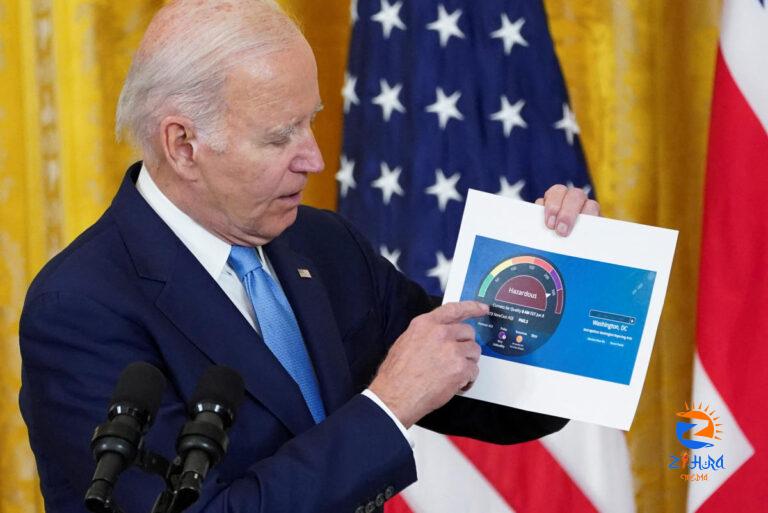
[ad_1]
“What’s your AQI?”
— Everyone on the East Coast rn
With smoke from Canadian wildfires triggering air quality alerts in more than a dozen U.S. states, millions of Americans have suddenly become intimately familiar with the Air Quality Index, or AQI, a color-coded numerical scale that helps people understand the health risks and exposures to airborne pollutants at any given time.
The Environmental Protection Agency has an online dashboard (AirNow.gov) where you can type in your location (or any location) to find out the AQI.
“The U.S. Air Quality Index is getting a lot of media attention right now, but it is really fantastic,” Dr. Brady Scott, a fellow at the American Association for Respiratory Care, told Yahoo News. “Because you can just plug in your zip code and kind of understand the air quality is where you’re at.”
The so-called AirNow system was created by the EPA in 1998 to serve as a “centralized, nationwide repository” for real-time data collected by local, state and federal agencies, including the National Oceanic and Atmospheric Administration (NOAA), the National Park Service, NASA and the Centers for Disease Control and Prevention.
And the subsequent Air Quality Index (AQI) measures the amount of pollution in the air on a 0-500 scale, with the higher number signaling a higher concentration of the following pollutants regulated by the Clean Air Act:
• Ground-level ozone
• Particle pollution (also known as particulate matter)
• Carbon monoxide
• Sulfur dioxide
• Nitrogen dioxide
The wildfires in Canada are releasing high concentrations of fine particulate matter (with diameters less than 2.5 micrometers, virtually invisible to the naked eye) into air that has drifted south, causing the AQI in states from Vermont to South Carolina to spike.
In New York City on Wednesday, for example, the AQI peaked at 405, the highest level since recordkeeping began, according to an analysis of EPA data by Fox Weather. The previous record — 279 — was set in July 1981.
Any number over 100 is considered “unhealthy” for sensitive groups, such as children or people with heart or lung diseases. When the AQI goes above 200, everyone, even those without respiratory conditions, is at risk.
Or you can just go by the colors.
“If it’s green or yellow, it’s OK for most individuals,” Brady explained. “When it’s orange, there’s concern that some people, especially those with respiratory conditions, could be impacted. When you’re in the red zone and certainly when we’re in the purple or maroon zones, even if you are a so-called healthy person.”
If you haven’t done so already, you can look up your current AQI on the AirNow.gov website here >>>
[ad_2]